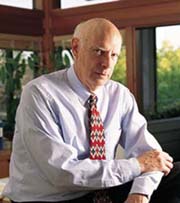
Handling of Family Issues. Dynastic foundations may face challenges when there are conflicts between family members. Different generations may also have different views on philanthropy.
Establishing Mission, Vision and Strategy. This is important as foundations, just like any other organisation, need to be clear on their goals and direction. What are the key causes that are being supported? What is the due process of accomplishing those goals? If these are not established, foundations will simply be flooded with myriad requests.
Strategic Approaches. These cover areas like services, capital, research, communications, education, policy changes, KPIs, and general support.
Implementation of strategy also figures largely. How you do it is sometimes more important than what to do. Key issues include the size and duration of grants, evaluation, "thinking big", and exit strategy.
Communicating Mission, Vision and Strategy. No point to give money if the impact is minimal and participation is limited. Key channels include websites (and blogs?), emails, press publicity and internal communications.
Continuous Improvement. Finding out if your grant giving has made a difference though surveys, meetings with grantees, and keeping your boards informed.
Finances and Staff. Who should handle investment decisions at the foundations. Also, who are the staff members that should be involved?
Values and Ethics. Giving right versus giving smart. Managing media and public attention, as well as government interest. A study around the world has shown that there are 5 main values, namely Integrity, Respect, Responsibility, Fairness and Compassion.
Sometimes foundations encounter what Colburn calls a Dilemma Paradigm. In other words, handling issues like truth versus loyalty, individual versus community needs, short versus long term, and justice versus mercy. The key to resolving these?
1) Do what's best for the greatest number of people (ENDS-BASED)
2) Follow your highest sense of principle (RULE-BASED)
3) Do what you would want others to do to you (RECIPROCITY-BASED)
Finally, of course, is the act of making the decision. To do so, one needs to look at the 3 perspectives above and also have the moral courage to do so.
Winston Churchill himself has said
"Without courage, all other virtues lose their meaning."
What struck me the most were the innovative ways of giving. For example, Packard Foundation had temporarily bidded for a piece of prime land with the intention of turning it into a public park, guaranteed a building to lower interest rates for a non-profit, and started an insurance company together with other foundations for childcare centres after premium rates went up the roof after the recent spate of childcare molest cases in the States.
Oh yes, US foundations need to distribute at least 5% of their assets every year. Their tax on foundations are only 2% currently which is a lot more attractive than the up to 52% tax rate which may otherwise apply for estate and other duties there. They also get a tax deduction for philanthropic gifts.
Labels: charity, donations, foundation, giving, philanthropy